- By Travis Cox
- May 31, 2020
- Operations And Management
Summary
Fast Forward
- Digitalization starts with a new operations technology on the plant floor that seamlessly integrates with IT and enterprise.
- It is easier than ever to remove technological and economic obstacles to digitalization and implement IIoT technology to openly and seamlessly share data throughout the enterprise.
- We need to stop connecting devices to applications with protocols and connect devices to infrastructure.
Modern technologies, properly applied, are helping organizations move ahead
By Travis Cox 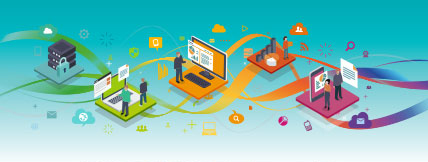
Although there are certainly challenges to improving the Industrial Internet of Things (IIoT) and creating real digital transformation, today there are solid tools that can really help us. And some of this work is becoming easier than ever. For example, web browsers and cell phones are very easy to use—and both are enabling valuable projects in human-machine interface (HMI) and supervisory control and data acquisition (SCADA). Meanwhile, available development resources are making it faster and easier to build the solutions we need. And interoperability is on the rise. Overall, there are exciting opportunities for all of us.
We have already seen modern technologies helping factories go paperless—doing away with manual data entry, clipboards, whiteboards, and spreadsheets. Numerous industrial processes have been automated: recipes, reports, alarming, data collection, packaging, security management, and more. Entire enterprises now have the ability to access, visualize, and analyze data like never before—allowing them to make better decisions and stay competitive.
If you are not there yet, how do you get there? First, consider five key challenges that make digital transformation hard to achieve:
- difficulty collecting data at the edge of the network
- issues with turning data into real action
- the long, hard process of project development/deployment
- costs for solutions that scale
- complexities of working with big data in the cloud.
Meeting the challenges
What do we need to meet these challenges? A new architecture, one that starts with operations technology (OT) on the plant floor. Platforms upon which to easily build the ideal solutions. Modern, interoperable technologies. Edge computing and Message Queuing Telemetry Transport (MQTT). The new SCADA capabilities with tablets and phones. Hardware that comes with SCADA software embedded. New tools in the cloud. Unlimited licensing. And taking HMI and SCADA beyond their traditional roles. All these together—or even some of them—can show us data we have never had before, and give us new ways to analyze that data.
Fortunately, it is easier than ever to remove technological and economic obstacles. There are plenty of examples of organizations doing just that while building their dream IIoT projects. Let’s start with a new architecture—what it is and why we need it. Organizations see the promise of digital transformation: the ability to get their operational data into cloud information technology (IT) applications and do all kinds of analysis, business intelligence, and machine learning. But most organizations are trying to drive digital transformation from the top down. If you approach it in a way that does not work for the operator on the plant floor, it will not succeed. Digital transformation really must be implemented from the bottom up, with OT on board first.
You have to create a migration strategy that implements digital transformation but also meets all the OT requirements. It boils down to a single, crucial concept: an architecture change. We need to stop connecting devices to applications with protocols. Instead, we need to connect devices to infrastructure. By decoupling devices from applications, we get more access to data. At the same time, we must provide a superior OT solution that meets the needs of operators—a solution that is plug and play, reliable, and scalable. Organizations can start small with an OT-infrastructure plan that is inherently scalable. They need to learn more about the underlying complexities with OT, solve OT first, and then move to IT.
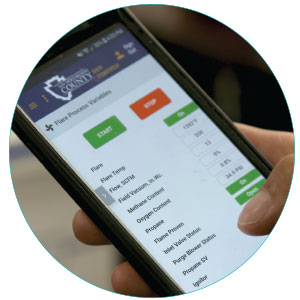
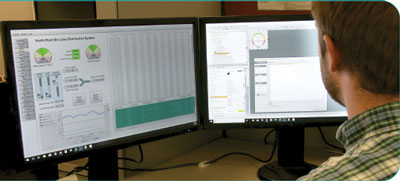
Leveraging the benefits of MQTT
This new OT architecture uses MQTT, a lightweight publish/subscribe protocol that enables message-oriented middleware architectures. MQTT is an open OASIS (Organization for the Advancement of Structured Information Standards) and ISO standard (ISO/IEC 20922). The protocol usually runs over TCP/IP; however, any network protocol that provides ordered, lossless, bidirectional connections can support MQTT. It is meant for connections to remote locations that require a small code footprint or where the network bandwidth is limited.
With MQTT, device data is published by exception to a MQTT server, either on the premises or in the cloud. Applications subscribe to the MQTT server to get data; there is no need for applications to connect to the end devices themselves. MQTT has become the leading messaging protocol for IIoT, because it has several benefits:
- open standard/interoperable
- decouples devices from applications
- reports by exception
- requires little bandwidth
- TLS (Transport Layer Security)
- remote-originated connection (outbound only, no inbound firewall rules)
- stateful awareness
- single source of truth with context (name, engineering units, low, high, etc.)
- auto-discovery of tags
- data buffering (store and forward)
- plug-and-play functionality.
As an organization acquires new sensors or upgrades equipment that supports MQTT, the SCADA system immediately gets access to that data without having to know about the end device. With this new architecture, data is openly shared throughout the enterprise.
To get to a new architecture, we also need edge computing and platforms for HMI, SCADA, and MESs. A platform is an environment or ecosystem that provides a foundation for creative problem solving. It enables innovation and allows a community of players to contribute—thus creating additional value around the platform. Platforms typically have:
- open access and interfaces
- cross-platform compatibility
- connectivity both in and out
- modular architecture (easy to build on and extend)
- scalability (easy to add more tags, devices, and clients to meet demands)
- extensibility (through software development kit, application programming interface).
No one system can provide everything. A good platform is so important, because it lets you build exactly what you need, when you need it. It is a foundation to solve immediate needs while also allowing for expansion and scalability with ease and affordability. Information technology has been using platforms for many years. Now it is time for the operational world to get on board with platforms.
Unlimited licensing is another key element. You cannot build your ideal SCADA systems if you have to pay more fees every time you expand. With unlimited licensing, a SCADA system is sold by the server, so you get an unlimited number of clients, tags, and connections for the cost of one license. This gives you the opportunity to create more projects with the scalability you need. It also allows you to put data in front of as many users as you want—operators, managers, IT people, your CEO, and even your customers.
Improved edge capabilities
Capturing, processing, and visualizing critical data at the edge can be difficult and expensive. But with the right tools, organizations can extend data collection, visualization, and system management all the way to the edge of the network. Local HMIs on the edge have control, alarm notification, trending, and other tools. Software can give edge devices the ability to do more without needing to depend on the central server. Web services and powerful intelligence, such as analytics and machine learning, can be provided with edge-of-network devices. Field devices can be turned into lightweight edge gateways that publish data to an MQTT broker. There is more power and speed at the edge than ever before. Along with that, the edge can be managed centrally, including diagnostics, automatic backup and recovery, central licensing, and project and tag synchronization.
HMI and SCADA systems are becoming more powerful too. Organizations today want more access to industrial data; they want to integrate more systems; and they want solutions that solve real business challenges. Modern SCADA systems can help by leveraging the best of controls and IT technology. We are now seeing companies embrace modern industrial application platforms and technology, creating innovative industrial systems in all industries. New ways of utilizing SCADA include:
- combining data from, and integrating with, disparate systems
- running advanced logic engines and calculations
- getting data to more people
- leveraging the power within mobile devices.
SCADA has done an excellent job of communicating to programmable logic controllers (PLCs) and field devices. Traditional SCADA systems often have limitations on the brands of PLCs they can communicate with. It is important to be able to pull data from multiple disparate PLCs into a single platform for a “single pane of glass” for operators. Using modern standards, such as OPC UA, SCADA systems can seamlessly connect to these devices and other data sources, such as computerized maintenance management systems, enterprise resource planning (ERP), and MES. There is enormous benefit in connecting these systems together and adding more context to the operator’s screen.
Also, people are running complex calculations with their SCADA systems. Or they are connecting ERP or other business systems with SCADA, so customers can communicate directly to the plant floor—increasing the quality, speed, and efficiency of the supply chain. Engineers are putting three-dimensional images and virtual reality into SCADA, providing a more complete picture. The list goes on and on, and we are seeing creative, new uses of these technologies all the time.
More power in mobility
Data leads to prompt action more than ever now, with the increased use of smartphones and tablets. People can see data, make decisions, and control operations from a downtown sidewalk or anywhere else they happen to be. Smartphones and tablets are incredible pieces of technology. They have an amazing number of built-in sensors, such as GPS, camera, accelerometer, and Bluetooth.
Mobile applications for smartphones and tablets are entering the industrial space at an increasing rate—changing the way we acquire, view, store, analyze, and act on data and information. Pure-web HTML industrial applications are being built for any device. They can be mobile-responsive, automatically fitting screens of all sizes. Mobile-first applications are being built in native HTML5 and CSS (Cascading Style Sheets). They can run on any device with a web browser. With today’s tools, you can create smart industrial applications using a mobile device’s many sensors and other capabilities.
Another improvement in reducing development times is the use of free, community-built resources. Existing styles, views, templates, and more can be dropped into your project, saving time. Leveraging the work of others helps you get to the deployment phase more quickly.
Embedded software also helps save time. More and more device manufacturers are embedding SCADA software in their products. You can buy a device with the software you need already installed, configured, and licensed. It saves organizations time and money, and it provides the best hardware and software together. It is much easier for users to deploy, because the vendor has done most of the work for them. Many of the devices are IIoT-ready, with MQTT. As with other approaches mentioned above, this gets you closer to true digital transformation as efficiently as possible.
Get into the cloud
Today it is easier to leverage data with cloud platforms, machine learning, analytics, and artificial intelligence. New tools are using MQTT to get SCADA data directly into cloud infrastructures. Once it is there, the cloud offers many opportunities. It provides numerous databases, deep storage, and data lakes that make it easy and affordable to store all your data. The cloud provides instant availability, reliability, and scalability without the hassles of maintenance or local infrastructure.
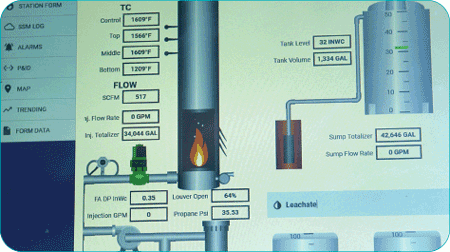
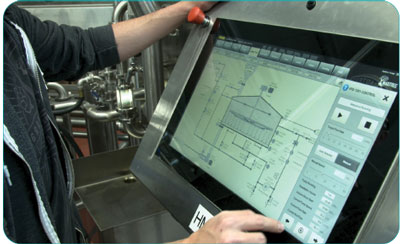
Once the data is in a cloud platform, you can use tools to turn that data into information, slicing and dicing the data in various analytic tools. You can overlay data from multiple sites into a single dashboard. You can use machine learning algorithms and tools to tune processes, predict machine failures, do forecasting, and more. The many options with cloud computing can be a huge help in your journey toward digital transformation.
With all the modern technologies and methods available, development and deployment can be faster than ever. There will always be challenges, but we are now more prepared to meet them head on. With a “digital-first” mindset, we can think beyond the traditional SCADA systems, and focus harder on getting more data to more people throughout the enterprise.
Reader Feedback
We want to hear from you! Please send us your comments and questions about this topic to InTechmagazine@isa.org.


